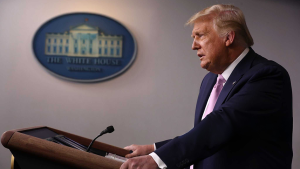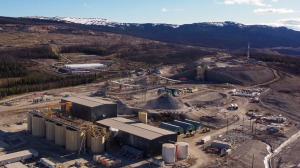Structural steel was the only material that could have been used to build the Michael Lee-Chin Crystal at Toronto’s Royal Ontario Museum, engineers, architects and members of the steel industry were told recently.
Engineering
Structural steel was the only material that could have been used to build the Michael Lee-Chin Crystal at Toronto’s Royal Ontario Museum, engineers, architects and members of the steel industry were told recently.
“It had to be structural steel,” said Vanbots Construction Corp project director John Martin, in describing the intricate geometry, complex structural engineering, and intensive three dimensional software required in the Crystal’s design and construction.
Approximately 2,800 tons of structural steel will support the 17,000-square-metre glass and extruded aluminum Crystal, which is comprised of five intersecting and self-stabilizing and interlocking crystals or volumes. Erection of the steel frame began in October 2004, with the final beam installed this summer.
“You don’t change it (the steel) on site. It has to be right when it arrives,” said Martin, in explaining the detailed fabrication and erection by Hamilton-based Walters.
Designed by Berlin-based Studio Daniel Libeskind in joint venture partnership with Toronto-based Bregman Hamann Architects, the Crystal is intended to create a new image for Canada’s largest museum along its Bloor Street main entrance and is the centerpiece of the museum’s $200 million Renaissance project, which also includes considerable renovation and restoration to existing galleries.
Structural engineer and building envelope consultants are Toronto-based Halsall Associates with London England-based Ove Arup & Partners International Ltd. Markham-based Vanbots is the construction manager.
Martin was a member of a design and construction team who provided an overview of the project and the role of steel to participants in the Canadian Institute of Steel Construction Ontario Region’s annual fall tour.
As part of his address Martin praised the role Neb Erakovic played in the project. “He had the courage to put his stamp on it.”
In describing the structural design, Erakovic told the audience that each of the five forms comprising the overall Crystal structure intersect creating complex three dimensional design challenges.
“Sometimes there are eight or even more members at the same node,” Erakovic explained.
Even with the use of highly sophisticated software packages, attention was still required to the structural design. And then Walters had to do its own three-dimensional modeling of all the various components, said Erakovic.
Courage was also displayed by the museum with willingness to have the old Terrace Gallery demolished to make way for the Crystal, said Bregman Hamann partner Paul Gogan, who called the design process “a journey of discovery.”
The Crystal will soar above the existing roofline and create a new streetscape presence for the museum without altering the fa<0x00E7>ade of its historic 1912 and 1934 wings, said Gogan.
While the concept of a crystal-style project is not new and has been done before, those limited projects will never reach the scale of Toronto’s Crystal, said museum project facilities manager Al Shaikoli.
“It will create an iconic status for Toronto, in much the same way as the Eiffel Tower does for Paris or the or the Golden Gate Bridge for San Francisco.”
The Michael Lee-Chin Crystal is scheduled for completion and opening next summer.










Recent Comments
comments for this post are closed